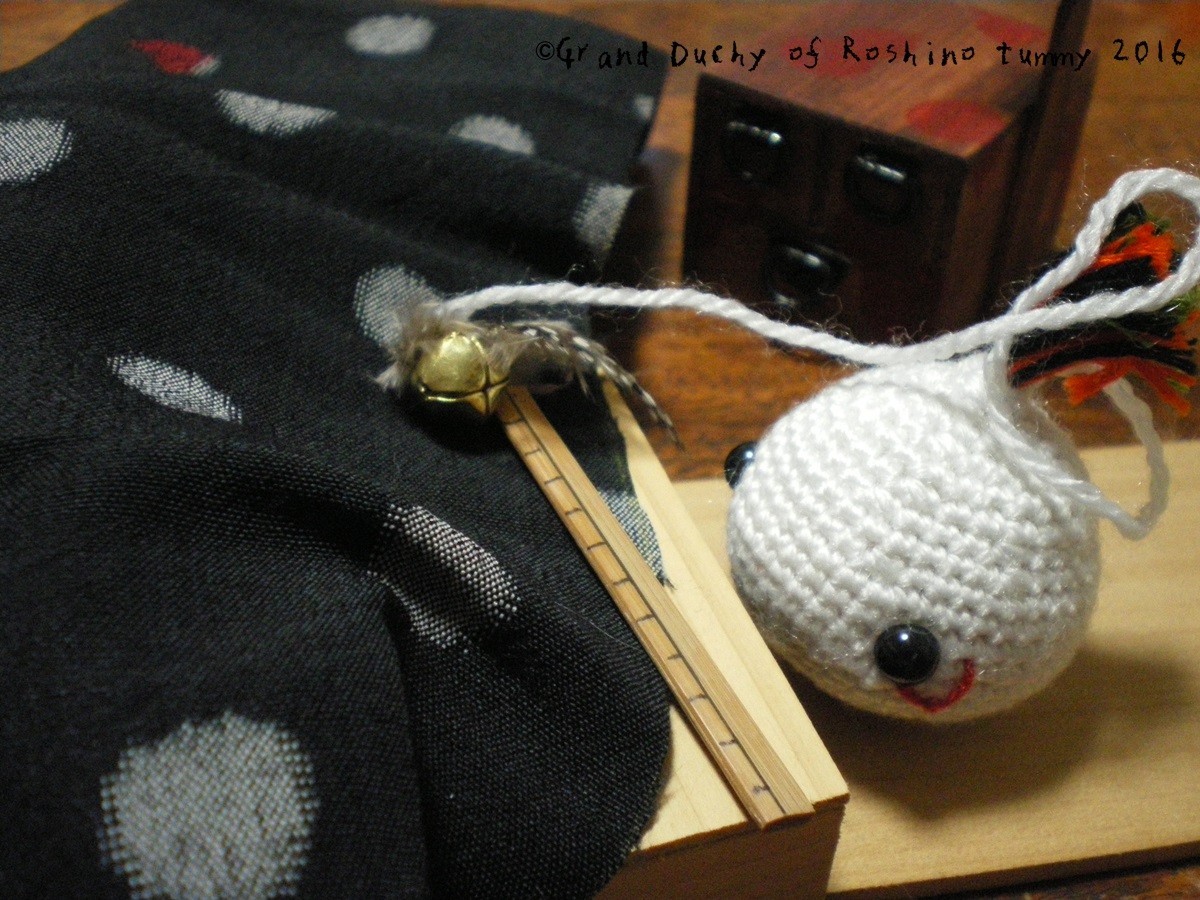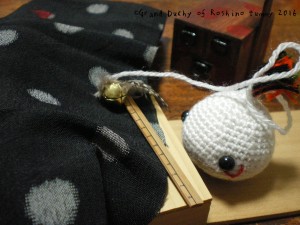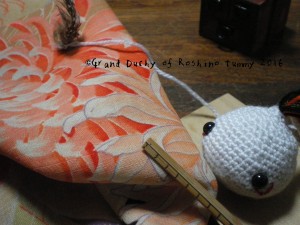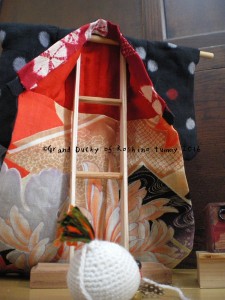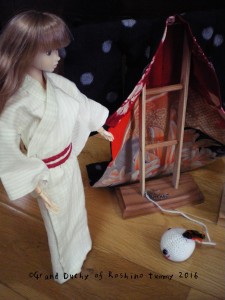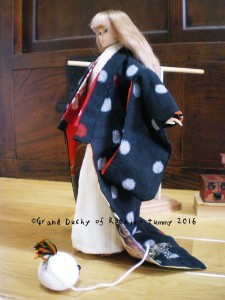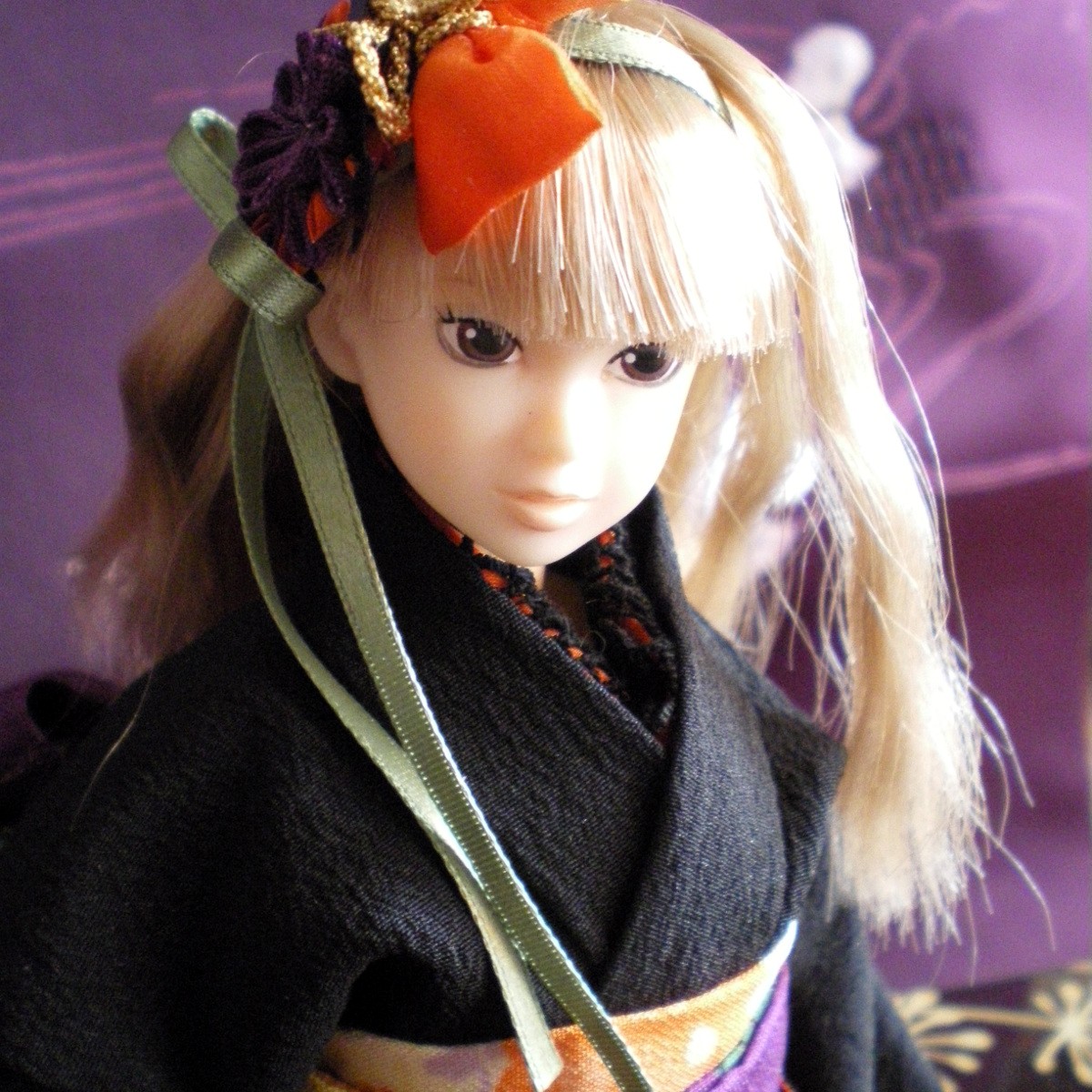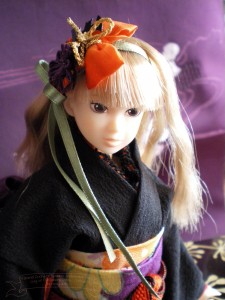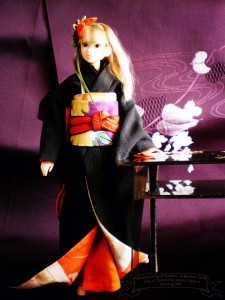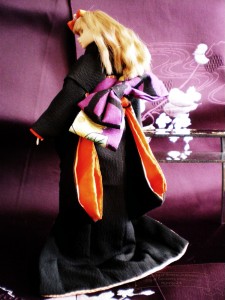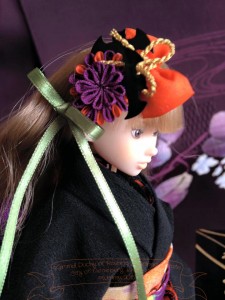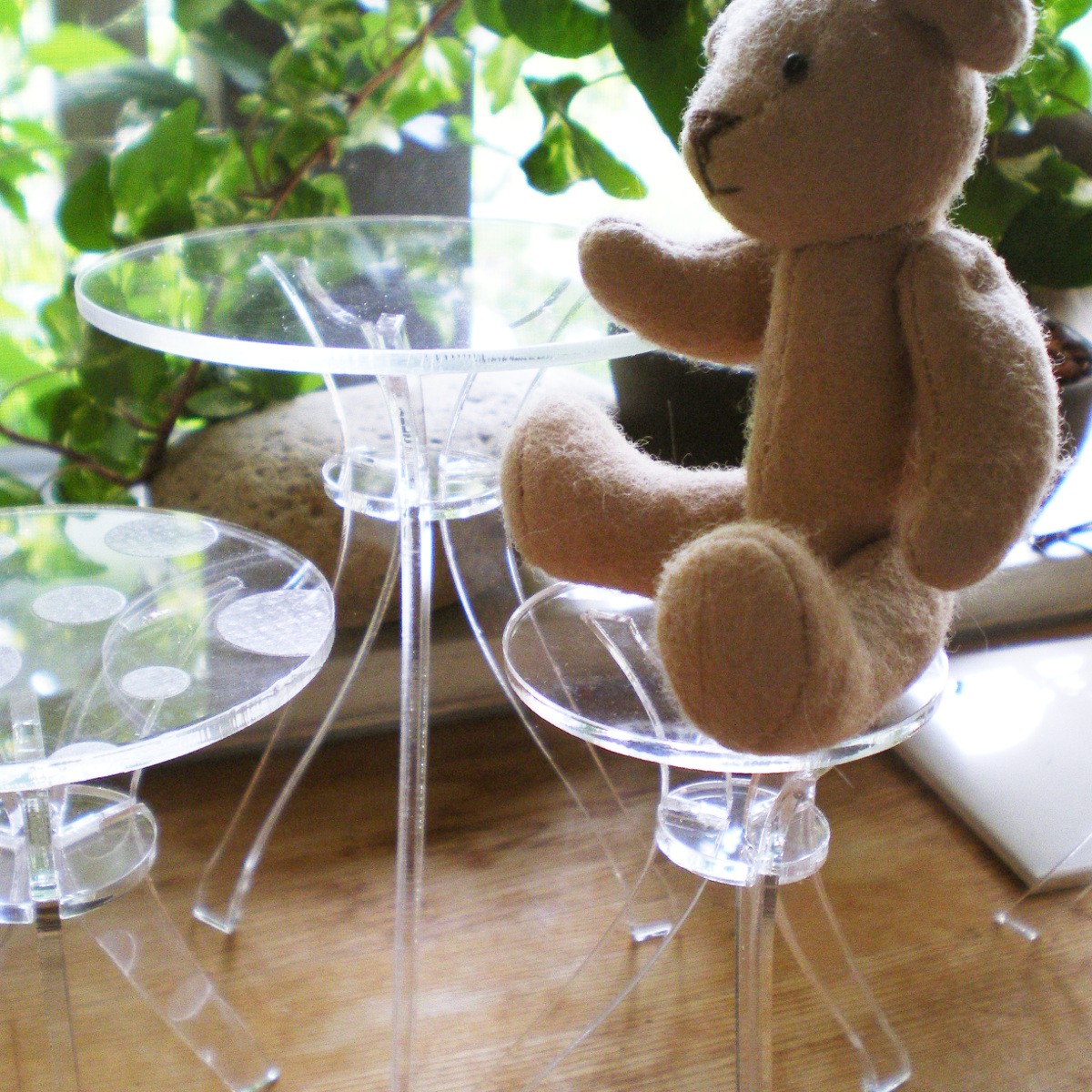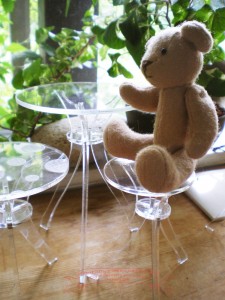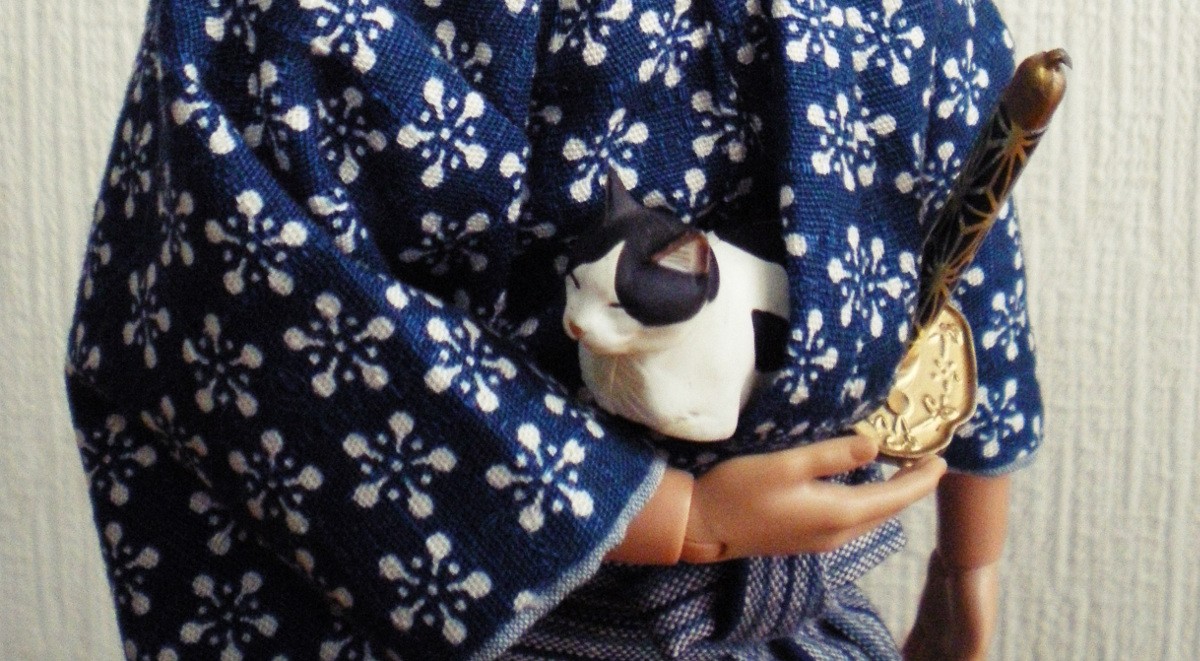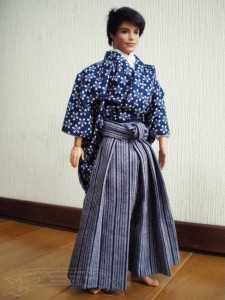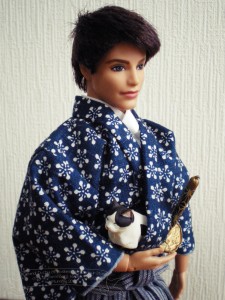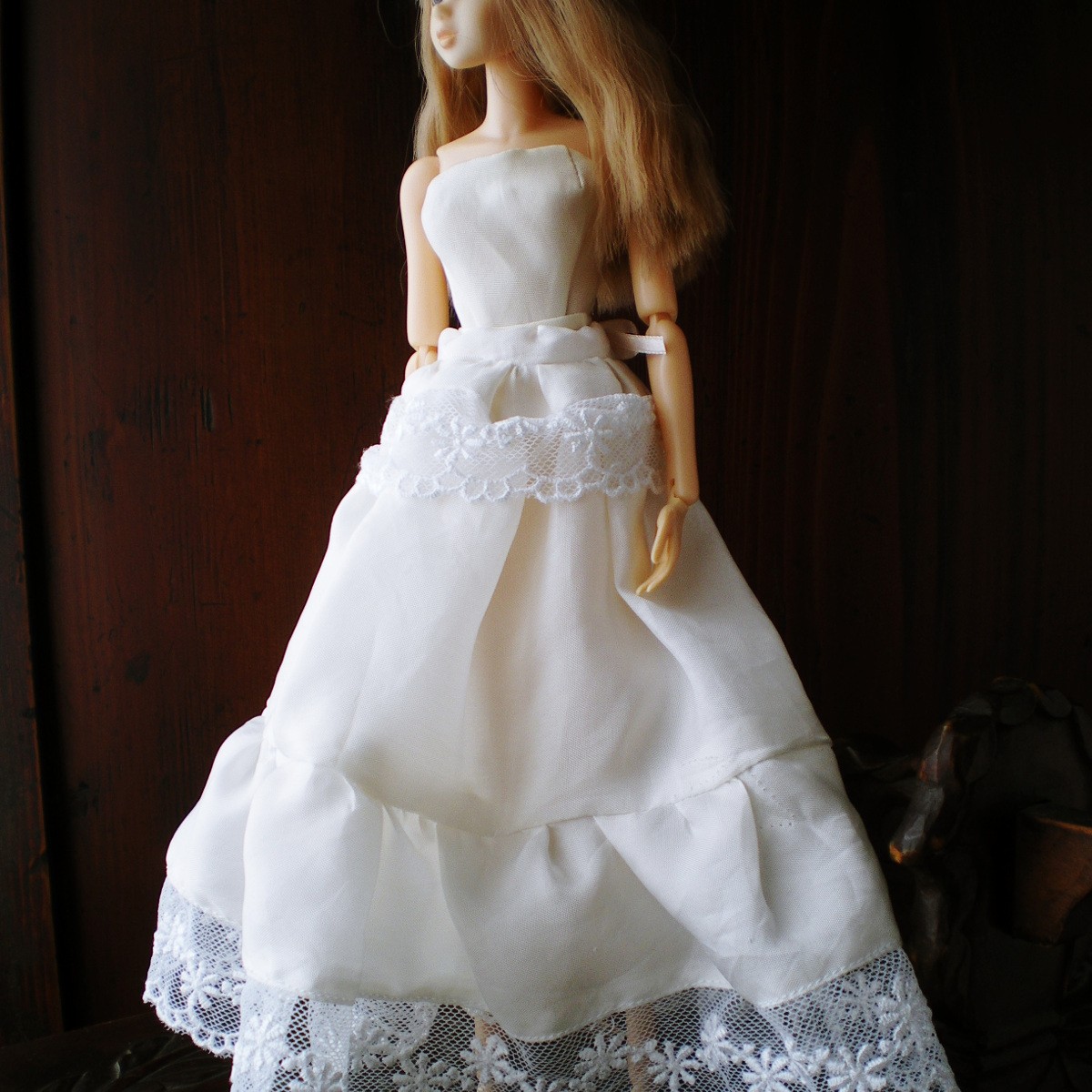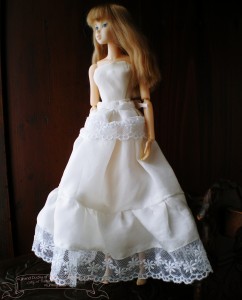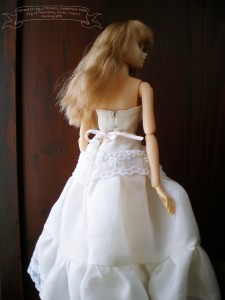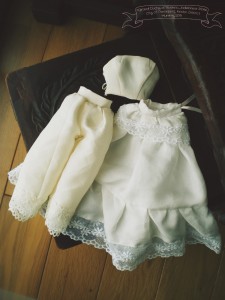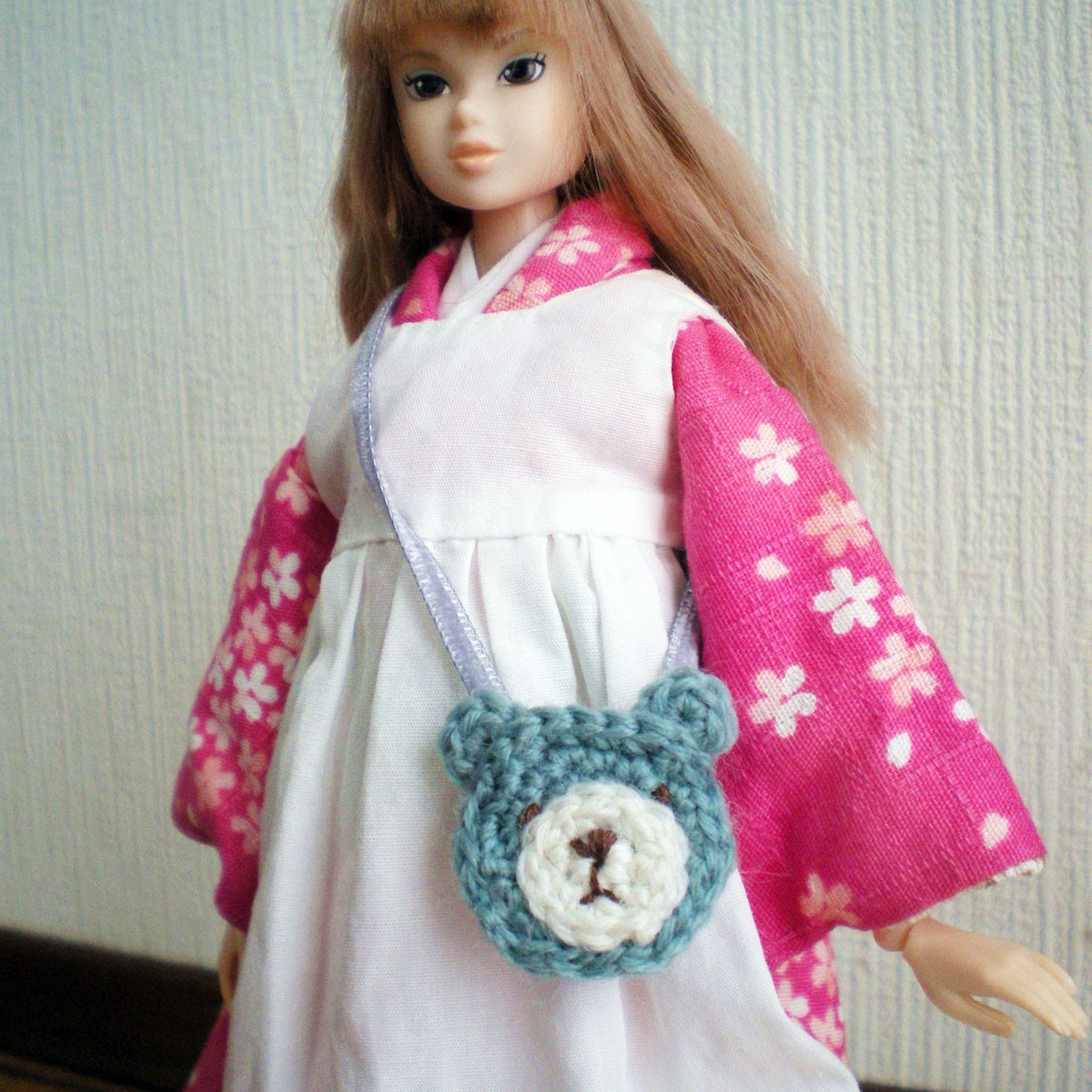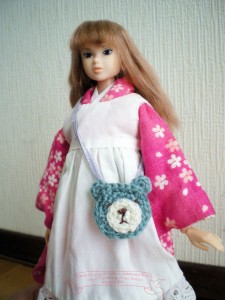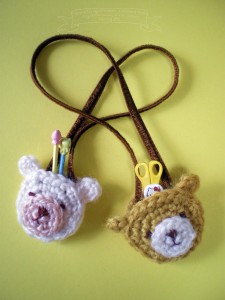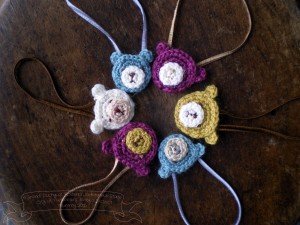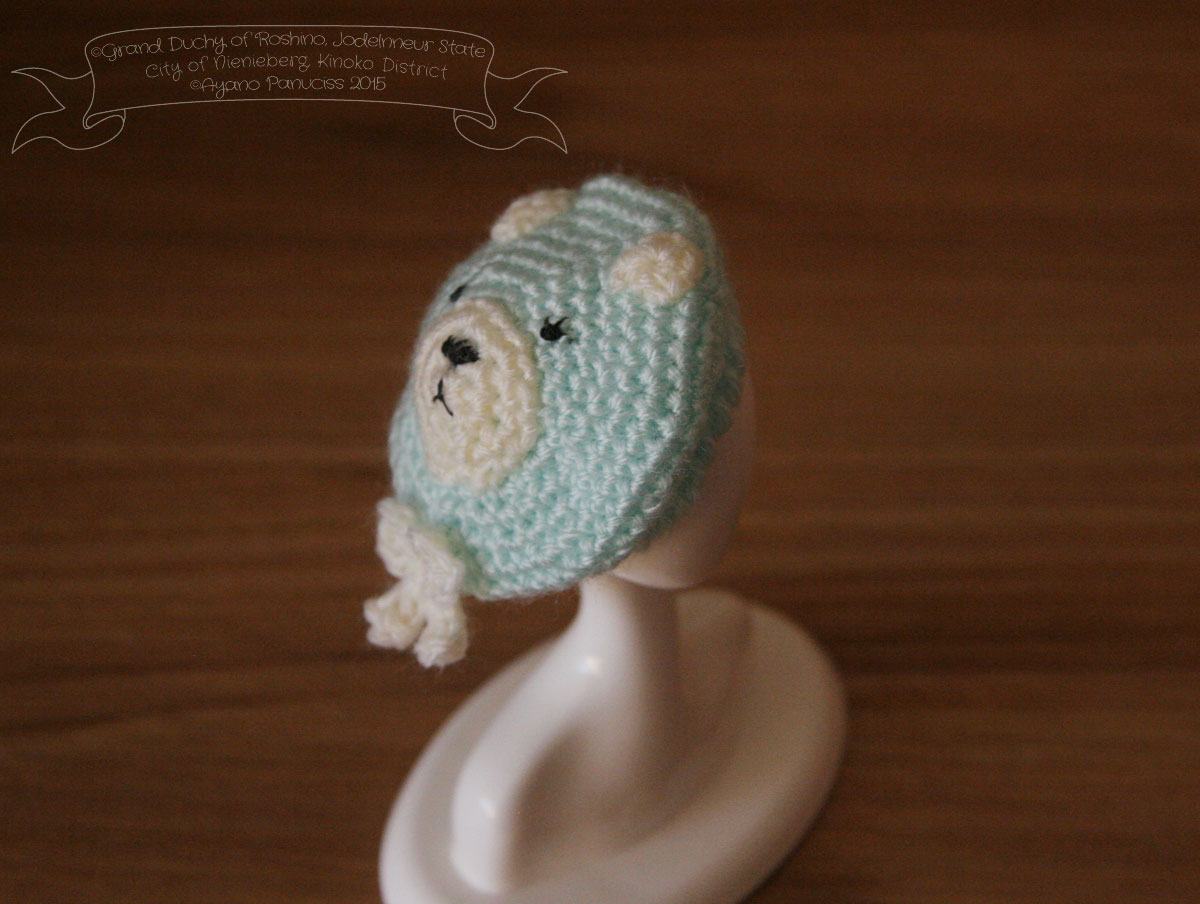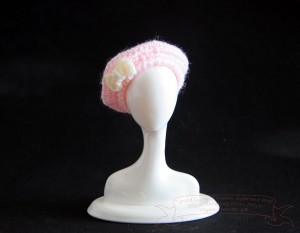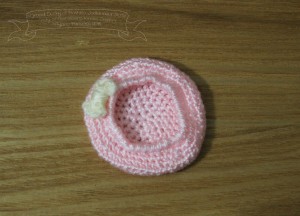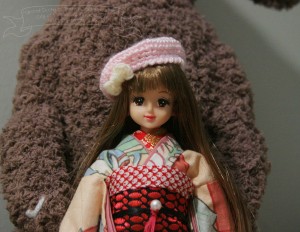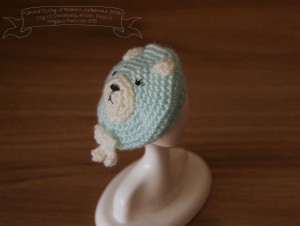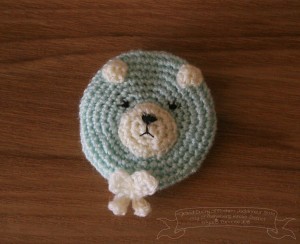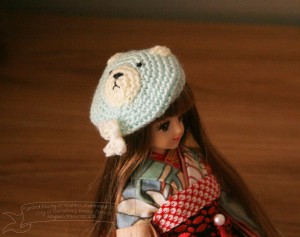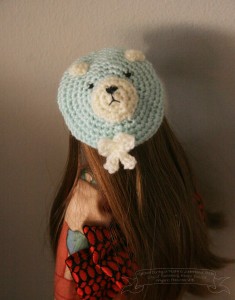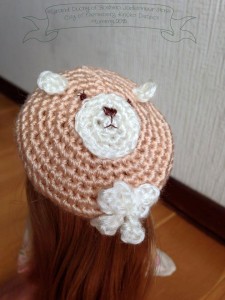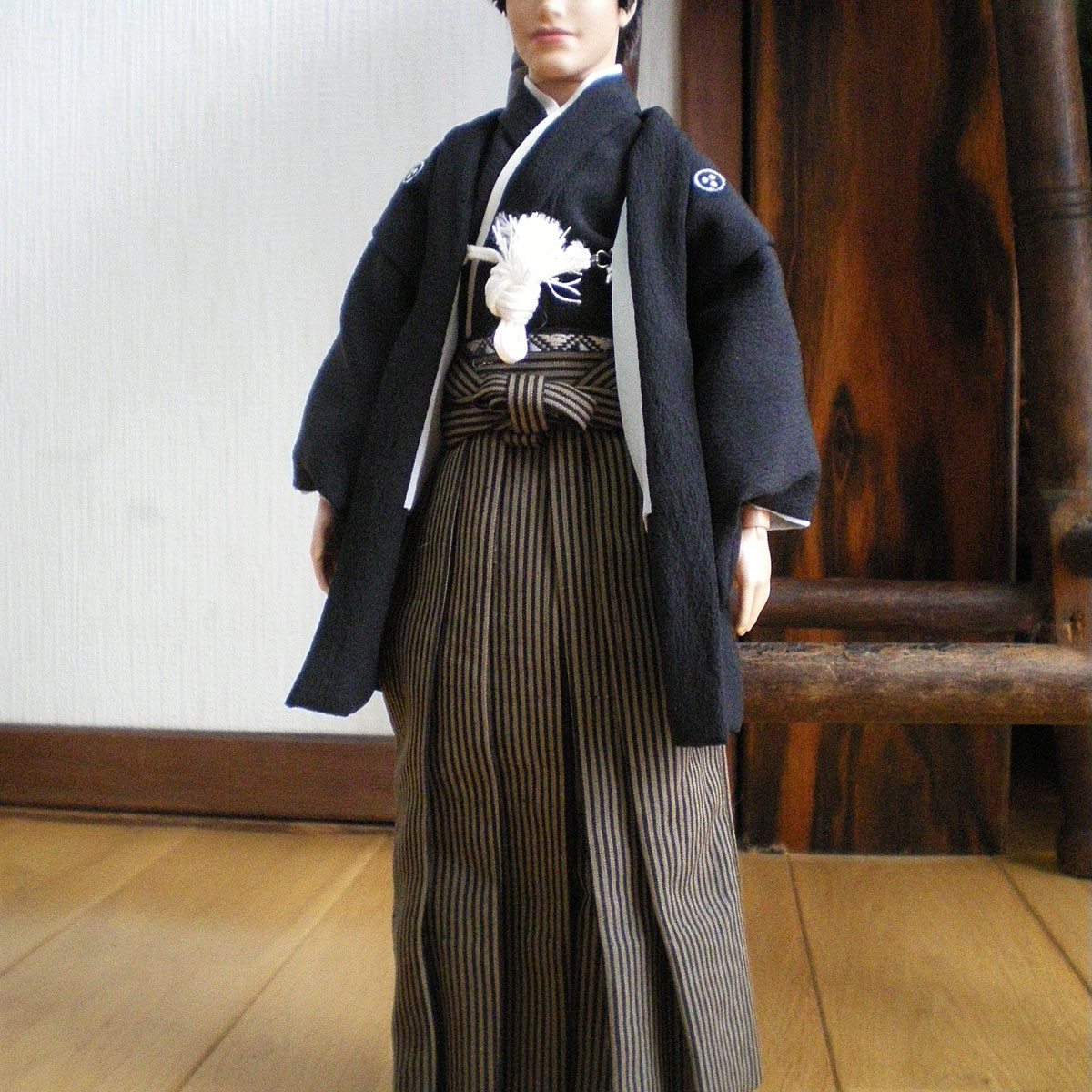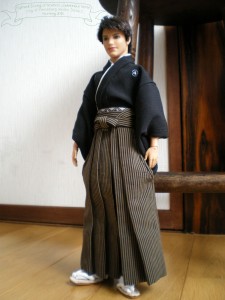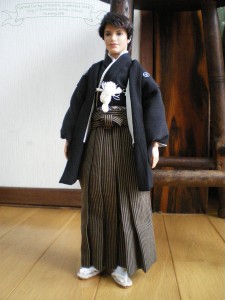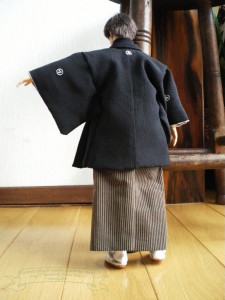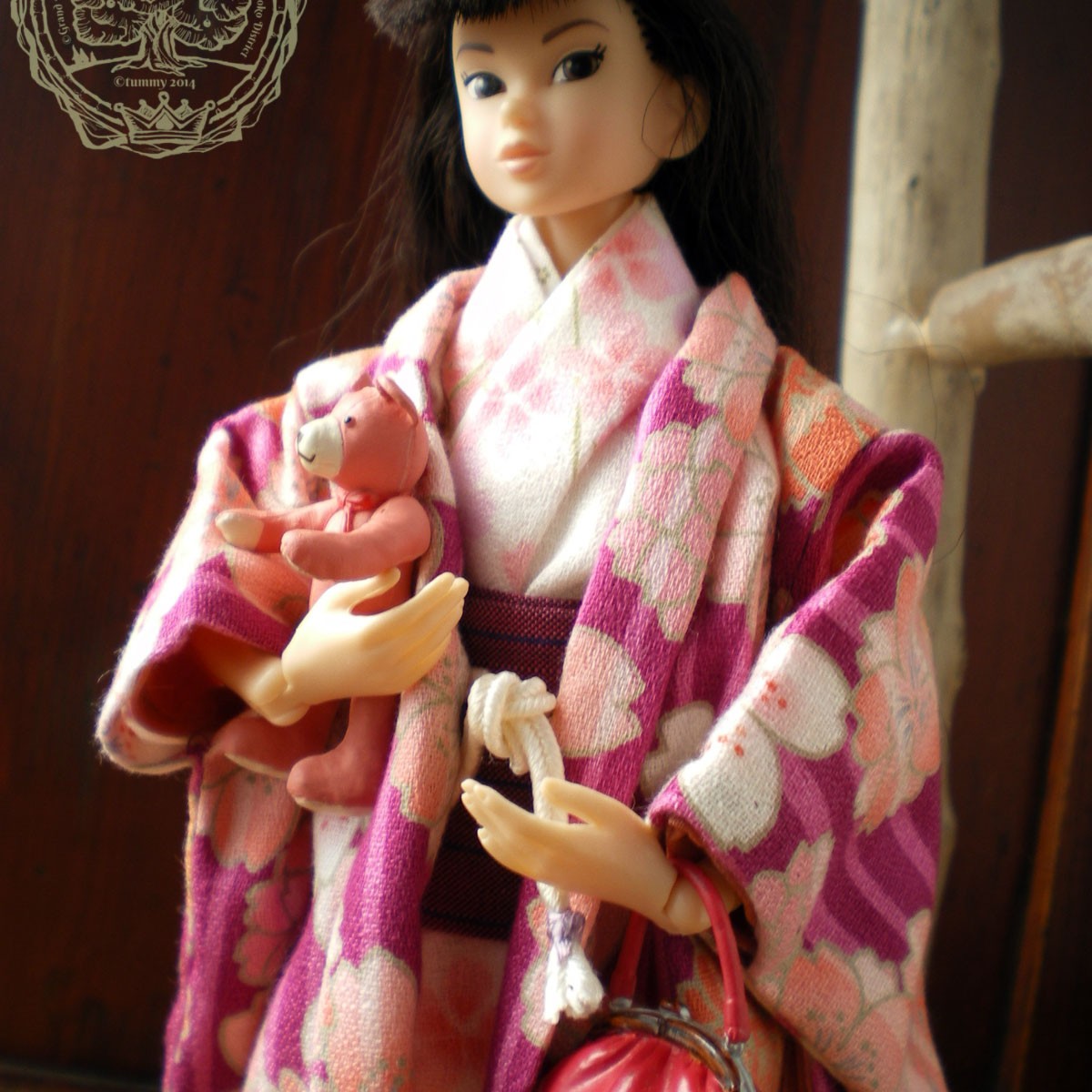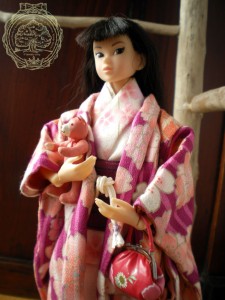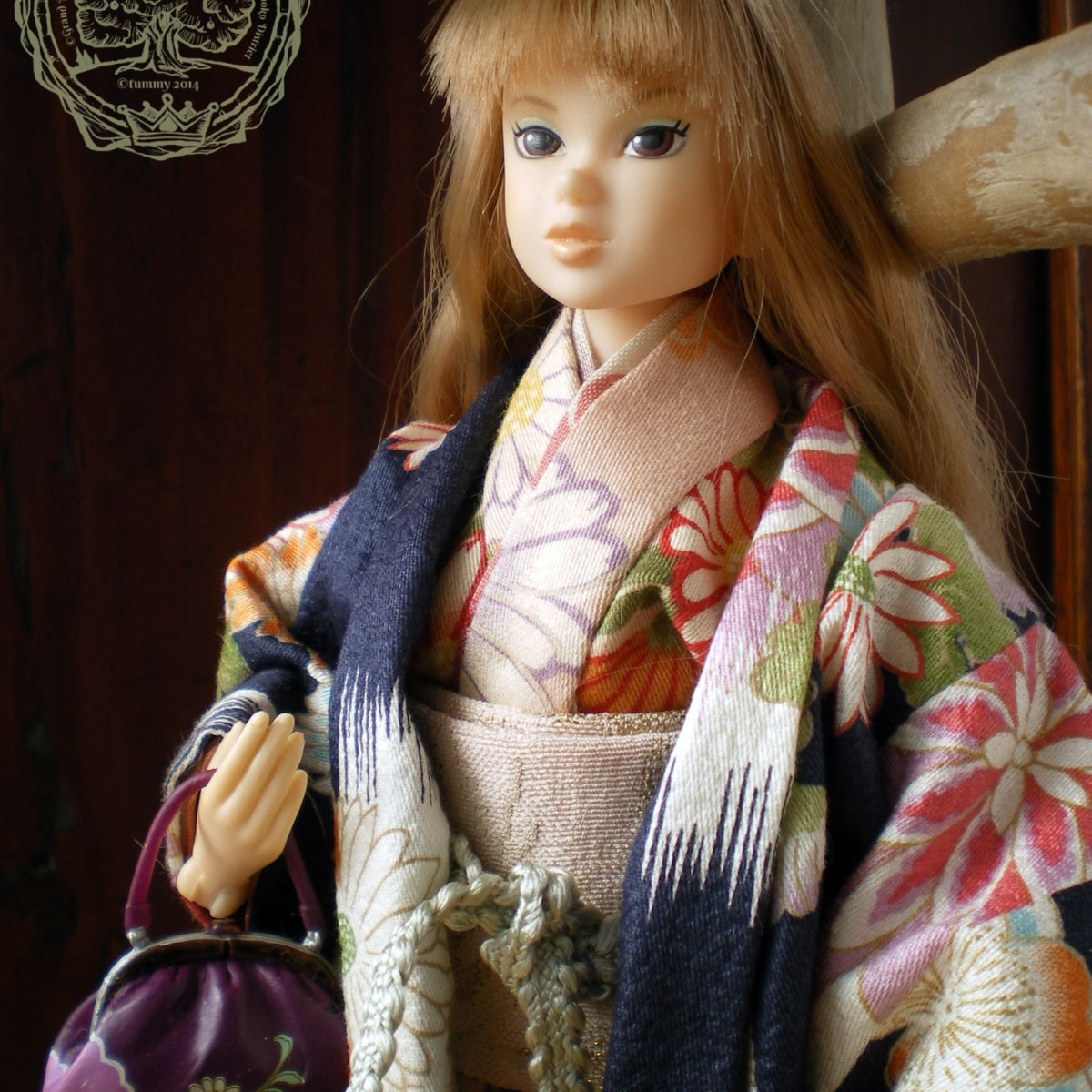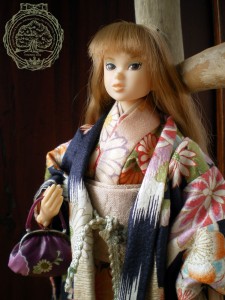Grand Duchy of Roshino, Jodelnneur State, City of Nienieberg, Kinoko District
ロシーノ大公国ヨーデルヌール州ニーニーベルグ市きのこ地区
Johnny the Kimono Tailor 仕立て屋ジョニー
今回は黒地に水玉模様が織り出された
反物の仕立ての注文がありました。
Johnny is a professional kimono tailor.
I received an order to make a kimono with polka dots print
on solid black fabric.
ジョニーは大胆な菊の模様の生地を選びました。
“The lower lining should be this!”
Johnny chose bold chrysanthemum print for the lower lining.
Johnny looks so satisfied with his completed work.
The client is here.
Johnny helps her get dressed new kimono she ordered.
“Thanks a lot! Hope to see you again soon!”
Momoko doll’s Lingerie Set momokoドールのランジェリーセット
素材は着物の裏に使われていた絹(羽二重)です。
Here is a momoko doll’s lingerie set that I recently made.
Materials: mainly habutae silk (very fine Japanese silk)
which was used for the lining of the kimono.
There are buttons and loops
to fasten the bustier at the back.
The set consists of: bustier, long drawers, and full-length petticoat.
Doll’s crochet beret 1/6サイズドールのかぎ編みベレー帽
これはリボンがついたものです。
I made 2 types of crochet berets for 1/6 size dolls.
This one has a bow.
It looks good that its bow in front, side, or even back.
This one is a bear beret.
It is very cute one.
リカちゃんにも似合います。
こちらは耳が一カ所だけ縫い付けられていますので
耳がたっています。
Made by tummy.
It looks good on Ricca-chan, too.
This one has its ears standing since only partial
perimeter is sewn into the beret.
Doll’s Kimono Montsuki Hakama 1/6サイズドール 紋付袴
着物と羽織の両胸と背中、両袖の後ろに紋が入ります。
これを「五つ紋」といいます。
長着に袴をつけます。
I made a kimono and hakama ensemble with family crests for 1/6 size doll.
It’s Japanese man’s formal attire.
Its kimono and haori have family crests on both sides of chest, back, and back of the sleeves.
They are called “Itsutsumon”, meaning five family crests.
First, put nagagi (ankle-length kimono) and hakama.
Then wear a haori over.
You can see where those family crests are on the back.
